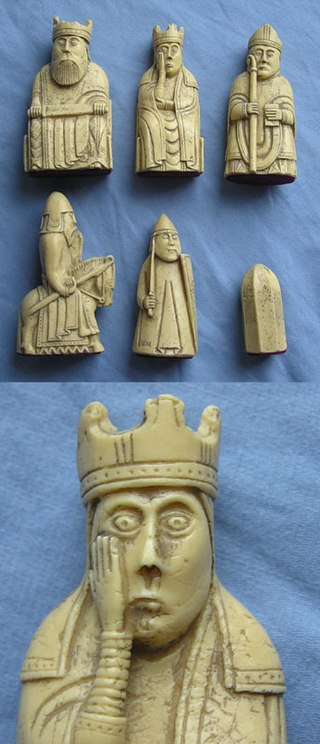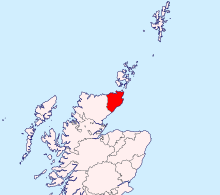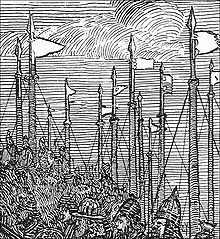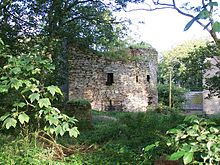
The Orkneyinga saga is a narrative of the history of the Orkney and Shetland islands and their relationship with other local polities, particularly Norway and Scotland. The saga has "no parallel in the social and literary record of Scotland" and is "the only medieval chronicle to have Orkney as the central place of action". The main focus of the work is the line of jarls who ruled the Earldom of Orkney, which constituted the Norðreyjar or Northern Isles of Orkney and Shetland and there are frequent references to both archipelagoes throughout.

Saint Magnus Erlendsson, Earl of Orkney, sometimes known as Magnus the Martyr, was Earl of Orkney from 1106 to about 1117.
Rognvald Eysteinsson was the founding Jarl of Møre in Norway, and a close relative and ally of Harald Fairhair, the earliest known King of Norway. In the Norse language he is known as Rǫgnvaldr Eysteinsson (Mǿrajarl) and in modern Norwegian as Ragnvald Mørejarl. He is sometimes referred to with bynames that may be translated into modern English as "Rognvald the Wise" or "Rognvald the Powerful".

Earl of Orkney, historically Jarl of Orkney, is a title of nobility encompassing the archipelagoes of Orkney and Shetland, which comprise the Northern Isles of Scotland. Originally founded by Norse invaders, the status of the rulers of the Northern Isles as Norwegian vassals was formalised in 1195. Although the Old Norse term jarl is etymologically related to "earl", and the jarls were succeeded by earls in the late 15th century, a Norwegian jarl is not the same thing. In the Norse context the distinction between jarls and kings did not become significant until the late 11th century and the early jarls would therefore have had considerable independence of action until that time. The position of Jarl of Orkney was eventually the most senior rank in medieval Norway except for the king himself.
Einarr Rognvaldarson, often referred to by his byname Torf-Einarr, was one of the Norse earls of Orkney. The son of the Norse jarl Rognvald Eysteinsson and a concubine, his rise to power is related in sagas which apparently draw on verses of Einarr's own composition for inspiration. After battling for control of the Northern Isles of Scotland and a struggle with Norwegian royalty, Einarr founded a dynasty which retained control of the islands for centuries after his death.
Thorfinn Torf-Einarsson also known as Thorfinn Skull-splitter was a 10th-century Earl of Orkney. He appears in the Orkneyinga saga and briefly in St Olaf's Saga, as incorporated into the Heimskringla. These stories were first written down in Iceland in the early 13th century and much of the information they contain is "hard to corroborate".

The Earldom of Orkney is the official status of the Orkney Islands, and was a Norse territory ruled by the earls of Orkney from the ninth century until 1472. It was founded during the Viking Age by Viking raiders and settlers from Scandinavia. In the ninth and tenth centuries it covered the Northern Isles (Norðreyjar) of Orkney and Shetland, as well as Caithness and Sutherland on the mainland. It was a dependent territory of the Kingdom of Norway until 1472, when it was absorbed into the Kingdom of Scotland. Originally, the title of Jarl or Earl of Orkney was heritable.
Thorfinn Sigurdsson, also known as Thorfinn the Mighty, was an 11th-century Jarl of Orkney. He was the youngest of five sons of Jarl Sigurd Hlodvirsson and the only one resulting from Sigurd's marriage to a daughter of Malcolm II of Scotland. He ruled alone as jarl for about a third of the time that he held the title and jointly with one or more of his brothers or with his nephew Rögnvald Brusason for the remainder. Thorfinn married Ingibiorg Finnsdottir, daughter of Finn Arnesson, Jarl of Halland.
Sigurd Hlodvirsson, popularly known as Sigurd the Stout from the Old Norse Sigurðr digri, was an Earl of Orkney. The main sources for his life are the Norse Sagas, which were first written down some two centuries or more after his death. These engaging stories must therefore be treated with caution rather than as reliable historical documents.

Rögnvald Kali Kolsson, also known as Saint Ronald of Orkney, was a Norwegian earl of Orkney who came to be regarded as a Christian saint. Two of the Orkney Islands are named after Rögnvald, namely North Ronaldsay and South Ronaldsay.

Harald Maddadsson was Earl of Orkney and Mormaer of Caithness from 1139 until 1206. He was the son of Matad, Mormaer of Atholl, and Margaret, daughter of Earl Haakon Paulsson of Orkney. Of mixed Norse and Gaelic blood, and a descendant of Scots kings, he was a significant figure in northern Scotland, and played a prominent part in Scottish politics of the twelfth century. The Orkneyinga Saga names him one of the three most powerful Earls of Orkney along with Sigurd Eysteinsson and Thorfinn Sigurdsson.

Sigurd Eysteinsson, or Sigurd the Mighty, was the second Earl of Orkney—a title bequeathed to Sigurd by his brother Rognvald Eysteinsson. A son of Eystein Glumra, Sigurd was a leader in the Viking conquest of what is now northern Scotland.
Brusi Sigurdsson was one of Sigurd Hlodvirsson's four sons. He was joint Earl of Orkney from 1014. His life is recorded in the Orkneyinga Saga.
Rognvald Brusason , son of Brusi Sigurdsson, was Earl of Orkney jointly with Thorfinn Sigurdsson from about 1037 onwards. His life is recorded in the Orkneyinga Saga.
Haakon Paulsson was a Norwegian jarl who ruled the earldom of Orkney together with his cousin Magnus Erlendsson from 1105 to 1123. Their lives and times are recounted in the Orkneyinga saga, which was first written down in the early 13th century by an unknown Icelandic author.
Karl Hundason, also Karl Hundisson, is a personage in the Orkneyinga Saga. The saga recounts a war between Thorfinn Sigurdsson, Earl of Orkney, and Karl, whom it calls king of Scots. The question of his identity and historicity has been debated by historians of Scotland and the Northern Isles for more than a century. However a literal translation suggests that the name may simply be an insult.
Ragnhild Eriksdotter was the daughter of Eric Bloodaxe and his wife, Gunnhild. According to the Orkneyinga Saga, she was an ambitious and scheming woman who sought power through the men of the family of Thorfinn Torf-Einarsson, who was Earl of Orkney. The period after Thorfinn's death was one of dynastic strife.

Máel Brigte, also known as Máel Brigte the Bucktoothed or Máel Brigte Tusk was a 9th-century Pictish nobleman, most probably a mormaer of Moray. He was responsible – in a bizarre posthumous incident – for the death of Earl Sigurd the Mighty of Orkney.

Scandinavian Scotland was the period from the 8th to the 15th centuries during which Vikings and Norse settlers, mainly Norwegians and to a lesser extent other Scandinavians, and their descendants colonised parts of what is now the periphery of modern Scotland. Viking influence in the area commenced in the late 8th century, and hostility between the Scandinavian earls of Orkney and the emerging thalassocracy of the Kingdom of the Isles, the rulers of Ireland, Dál Riata and Alba, and intervention by the crown of Norway were recurring themes.
Helga Moddansdóttir was the mistress of Haakon Paulsson who was Earl of Orkney from 1105 to 1123.














